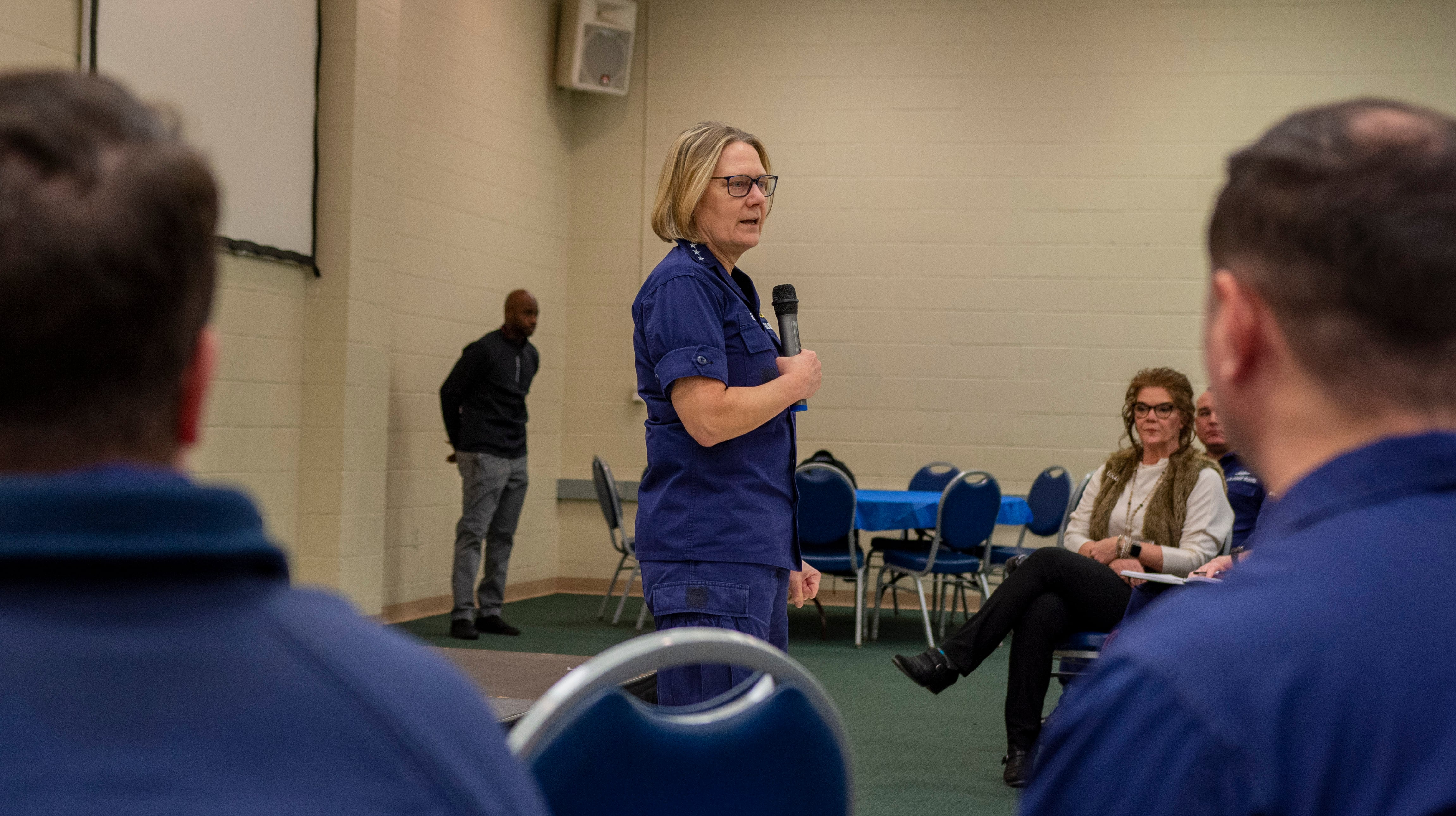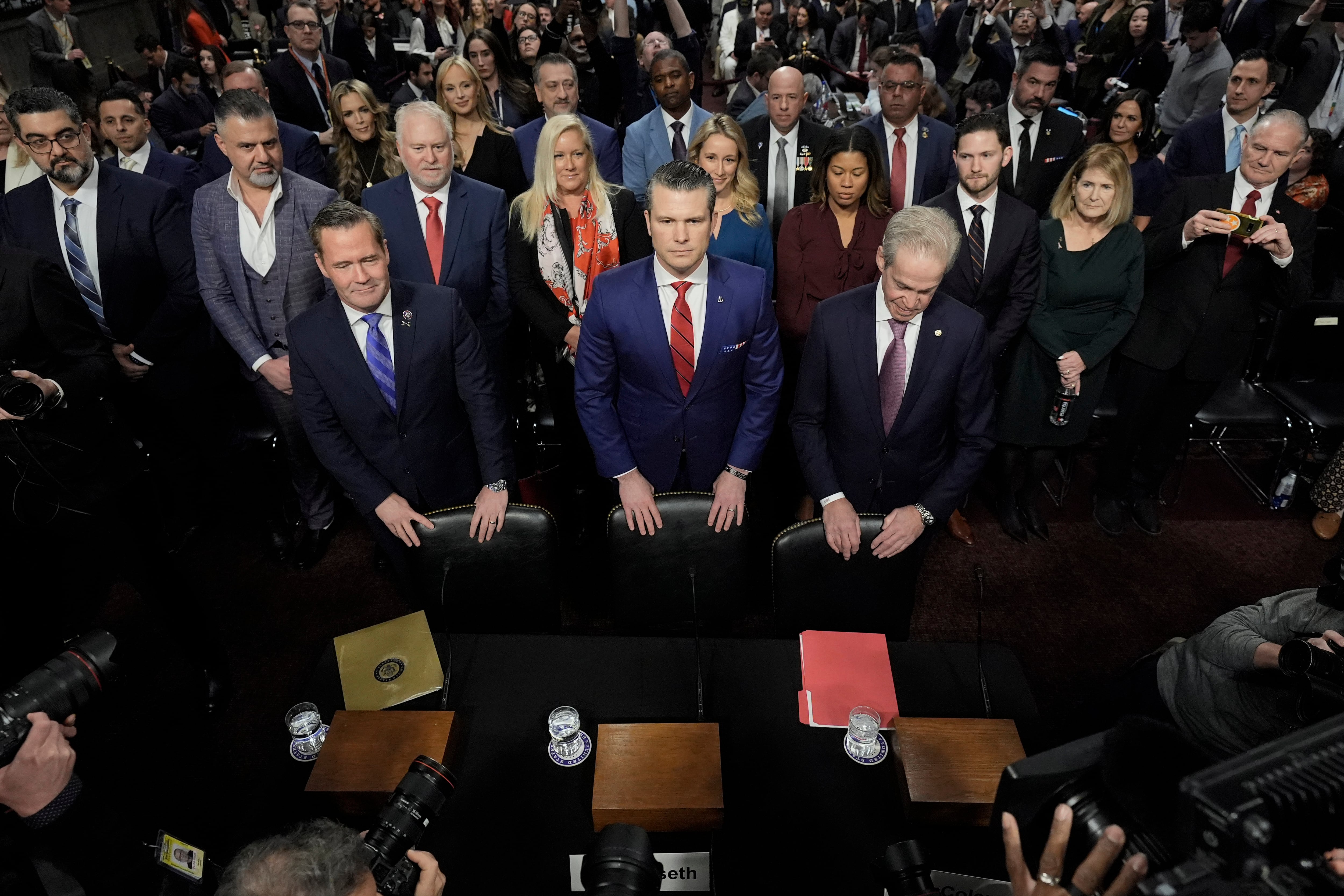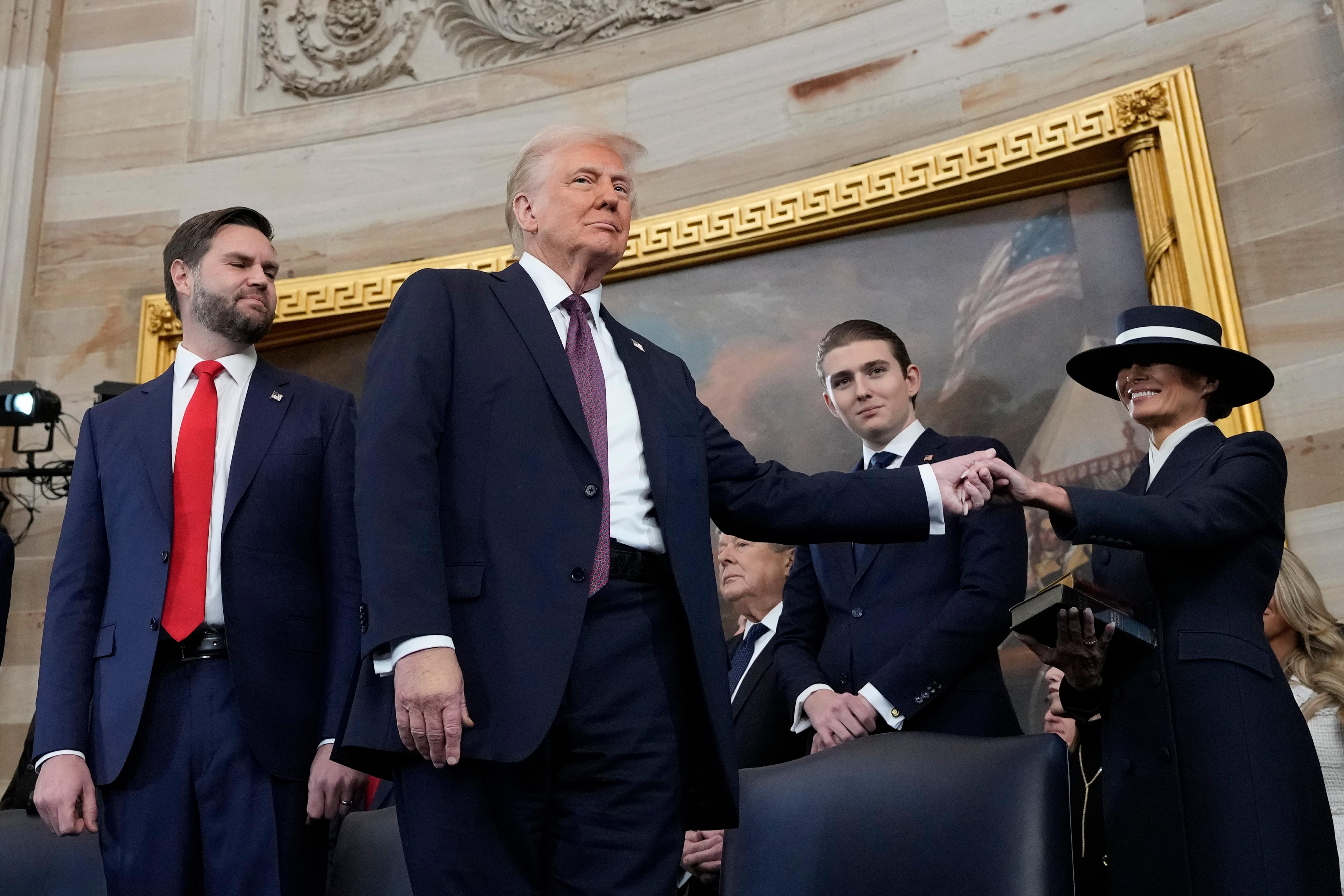The Marine Corps' top general said it is possible to increase the size of the Corps by nearly 12,000 Marines, as President-elect Donald Trump has called for, but he cautioned that the expansion shouldn't happen too quickly.
"Is it doable? Absolutely. It's not going to happen overnight," Marine Commandant Gen. Robert Neller said on Wednesday. "We've got a very high-quality force. Whenever you try to grow too fast, it's very difficult to maintain that level of quality and experience."
Still, if Trump tells the Marine Corps it needs to add that many Marines, and Congress provides the funding, the Corps will make it happen, Neller said while speaking at a U.S. Naval Institute event in Washington, D.C.
In September, Trump publicly embraced the recommendations from the conservative Heritage Foundation think tank about increasing the size of the military, including adding 12 active-duty Marine infantry battalions and one active-duty tank battalion.
Dakota Wood, a retired Marine lieutenant colonel who was principal author of the Heritage Foundation’s review, has since joined Trump’s defense transition team.
"We say that the United States needs to have the ability to handle two wars. Not that we're saying that we're going to be in two wars simultaneously, but if you only have a one-war force and you have to commit to it, that's everything," Wood told Marine Corps Times in November, before he was named to the transition team.
Increasing the Marine Corps as much as 12,000 will pose a series of personnel, training and logistics challenges, Neller said while speaking at the Newseum.
"That's a lot of people and you're talking about a volunteer force that has to be recruited," Neller said. "It's not just the Marines. I've got to find 'X' number more battalion commanders; 'X' number more sergeants major and company commanders and [operations officers]; let alone buy the gear and build the barracks."
Right now, the Marine Corps has infrastructure to support about 27 active-duty infantry battalions, Neller said. But he left no doubt that the Marines will grow to whatever size the next administration and Congress agree upon.
"We follow orders and if that's what we're told to do, we'll go out there and do our very best to do it," he said.
"Before we start growing more infantry or armor and things like that, the battlefield has changed," he said.
Neller stressed that if Congress approves funding for more Marines, they would serve in would serve in jobs such as information operations, electronic warfare, cyber, intelligence analysis, air defense and communications.
"We believe – not just me – but I think all the leadership believes that the capabilities that we're trying to build into the force are the things that we're really going to need for the future," he said. "If you don't have those things, whatever you formation you put on the battlefield is not going to be as survivable or combat effective without them."
Although the Heritage Foundation recommended increasing the size of the Marine Corps to 36 active-duty infantry battalions, it did not say how many total active-duty Marines the Corps should have, said Thomas Spoehr, director of the Heritage Foundation's Center for National Defense.
"We would certainly defer to the commandant of the Marine Corps if he said, 'I don't just need infantry; I need cyber forces,' or 'I need some other element that has since become more prominent than infantry,'" Spoehr told Marine Corps Times. "We would not dictate our beliefs on the Marine Corps in terms of mix, but we believe to do what needs to be done the Marine Corps needs to have 36 infantry battalions."
A decade ago, the Marine Corps began expanding from about 180,000 to 202,000 active-duty Marines to support the wars in Iraq and Afghanistan.
One way the Corps was able to grow so rapidly was by eliminating the restrictions on how many first-term Marines could re-enlist in fiscal 2006, said Anita Hattiangadi of CNA, a research institution funded by the Defense Department.
Each military occupational specialty has a number of boat spaces for first-term Marines. When the Corps lifted those re-enlistment caps, the effects on Marines' promotions opportunities was uneven, Hattiangadi told Marine Corps Times.
After eliminating the boat spaces restrictions, the Marine Corps also increased the number of Marines required for some jobs, such as explosive ordnance disposal, Hattiangadi explained.
"Now you've got many more spaces you need to fill with people who are there, so those people are going to experience faster promotions," she said.
But other MOSs did not grow, so getting rid of re-enlistment caps resulted in "a glut of people competing for promotions," Hattiangadi said.
"A good example of that would probably be an administrative MOS because even though the force structure was growing to 202,000, not a lot of the growth was going to be in admin positions," she said. "So people in the admin MOS would likely experience slower promotions going forward."
If lawmakers fund the increase, the extra Marines would serve in jobs Neller mentioned, including cyber and electronic warfare, he said.
"When we grew the force up to 202,000, basically what we did is we made more of the same capability: We added more infantry battalions, more tank companies – because that's what we needed for that fight," Neller said. "That's not what we're going to do if that [new increase] happens."
"Quite frankly, even if we didn't get the end strength increase, we were going to create those capabilities," Neller said. "If we had to take Marines from doing 'job A' and put them in these other capability sets, we were going to do that and accept the risk."
Adding 3,000 Marines would make the process of putting people where they are most needed much easier, Neller said.
"If you've got a little thing you want to put in my Christmas stocking that says '185,000 Marine Corps,' I'd be very happy," he quipped.
But even if Congress approves funding for 185,000 Marines, the Corps still may be too small. Under former Commandant Gen. James Amos, the service estimated it needed 186,800 Marines. In May, then-Assistant Commandant Gen. John Paxton said the Corps needs even more Marines now given the chaotic world situation.
"That was before Ukraine, before Syria, before South China Sea, before WikiLeaks," Paxton told reporters. "To us, 186,800 is about the floor, so the number may [need to] be north of there."
Speaking to Marine Corps Times in August, Paxton said that if the Corps' active-duty end strength grew to 190,000, it would give Marines more time in between deployments to recover and train.
"So the increase in end strength gives us flexibility on the bench as well as a depth that we could surge if things really got bad," Paxton said shortly before he retired. "We have a national risk in that our bench is not as deep as it needs to be if the big one came."
On Tuesday, Trump officially announced that he will nominate retired Marine Gen. James Mattis as defense secretary. Mattis has been skeptical of the U.S. military's efforts to open all combat jobs to women.
"We have to be very careful that we do not undercut the military battlefield effectiveness with shortsighted social programs," Mattis told Military Times in September.
As of November, about 180 female Marines were assigned to jobs that had been restricted to men only, said Maj. Garron Garn, a spokesman for Manpower & Reserve Affairs. Those jobs include both combat arms and non-combat arms, he said.
Neller declined to speculate on how Trump and Mattis, if confirmed, will approach the military's current gender integration efforts. "We follow our last order and we're in the process of implementing the policy that we've been given," he said.
Neller also became emotional when a reporter asked him about women in combat. He cited Maj. Megan McClung, a Marine spokeswoman killed in Iraq on Dec. 6, 2006 when a roadside bomb destroyed the vehicle she was riding in.
"I would never insult a female member of the armed service and talk about women in combat," Neller said. "They've been in combat throughout history. I don't mean to be rude. I'm coming up on the 10th anniversary when Megan McClung was killed in Ramadi … And I sent her to Ramadi. So, I don't mean to take umbrage, but when people start talking about women in combat, I don't need a class on women in combat."





